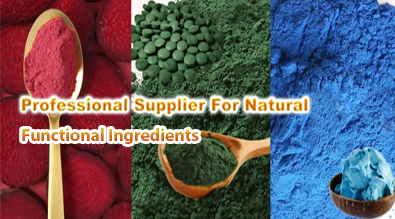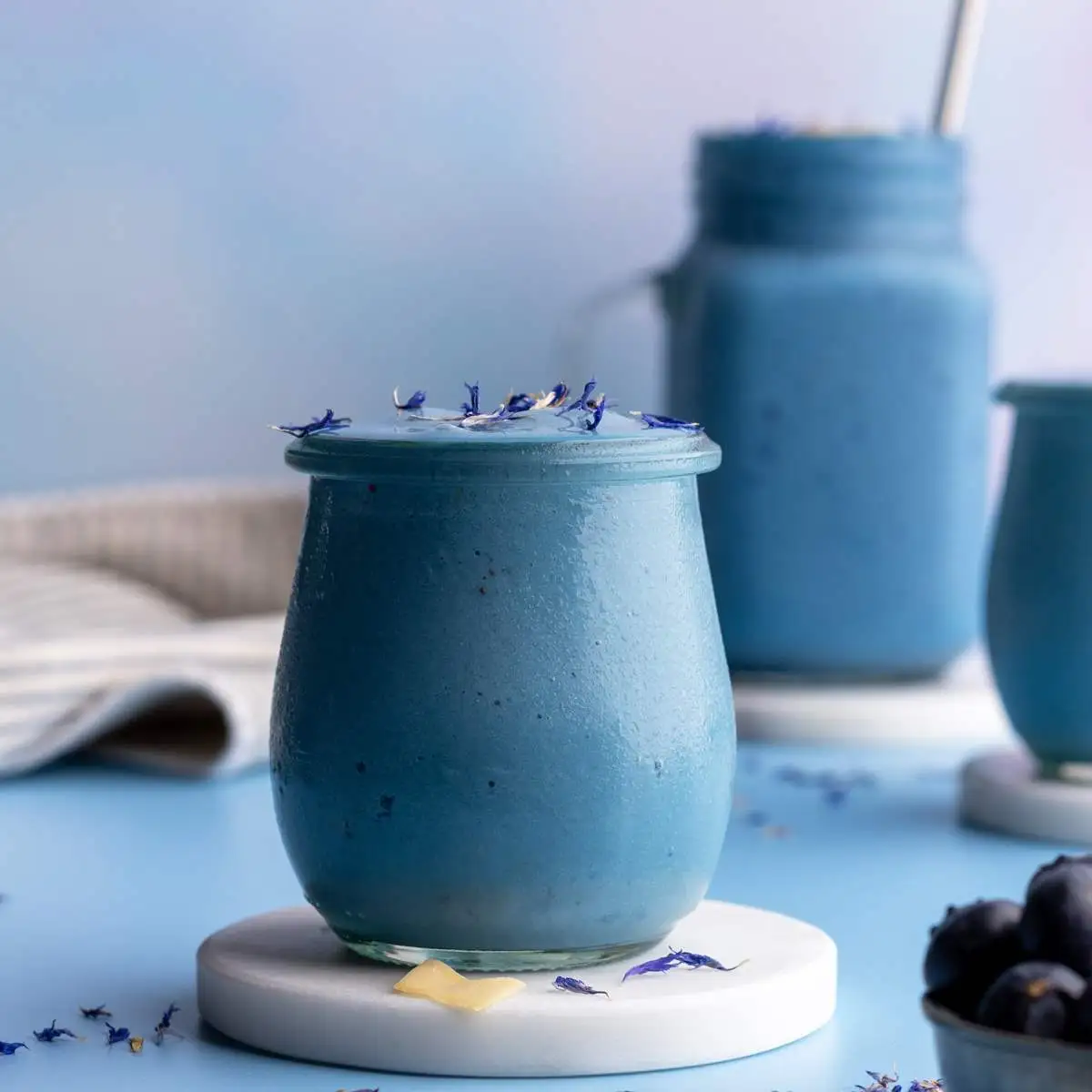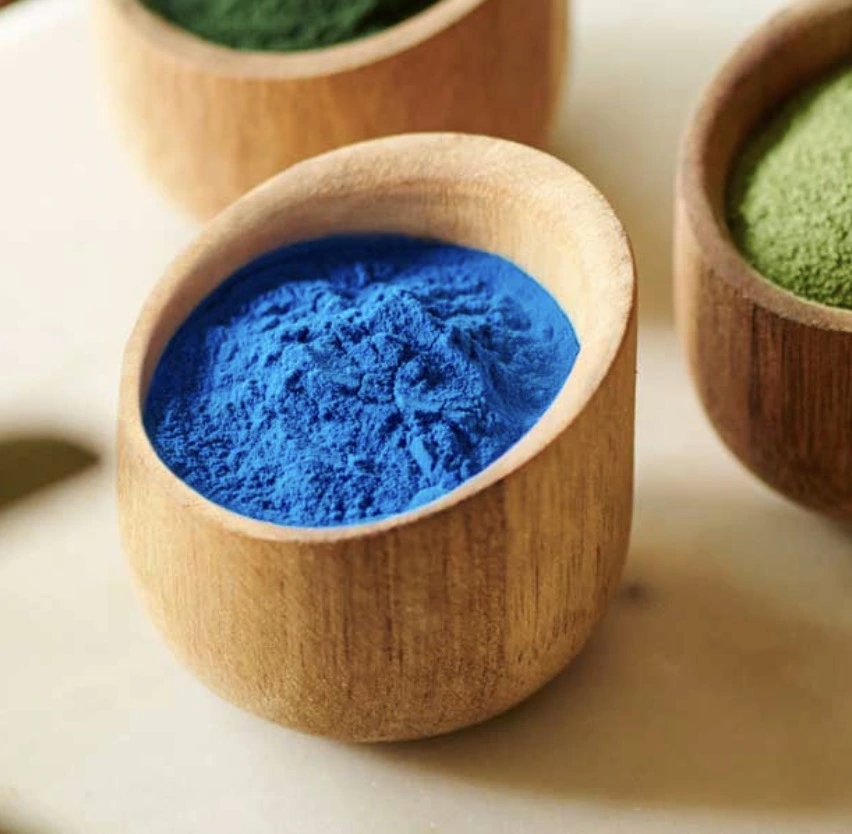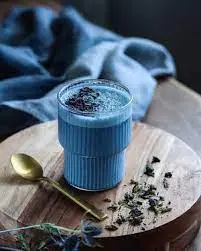Is Gardenia Blue the Best Natural Dye for Cosmetics?
In the ever-evolving world of cosmetics, the demand for natural and sustainable ingredients has skyrocketed. Among these, gardenia blue pigment has emerged as a fascinating option for those seeking vibrant, plant-based colorants. But is it truly the best natural dye for cosmetics? Let's delve into the world of gardenia blue and explore its potential in the beauty industry.

Advantages of gardenia blue pigment in cosmetics
Natural origin and sustainability
Gardenia blue pigment, derived from the fruits of Gardenia jasminoides, offers a sustainable alternative to synthetic dyes. This natural colorant aligns perfectly with the growing consumer demand for eco-friendly cosmetic products. By utilizing a plant-based source, cosmetic manufacturers can reduce their environmental footprint while appealing to environmentally conscious consumers.
Vibrant and stable coloration
One of the most striking features of gardenia blue pigment is its intense, eye-catching hue. This natural dye provides a rich, vibrant blue color that can enhance the visual appeal of various cosmetic products. Moreover, gardenia blue demonstrates remarkable stability across a wide pH range (4-8), ensuring consistent coloration in different formulations. This stability extends to heat resistance, with the pigment maintaining its hue even after exposure to temperatures up to 120°C for 60 minutes.
Versatility in formulations
Gardenia blue pigment showcases impressive versatility in cosmetic applications. Its water-soluble nature allows for effortless incorporation into a diverse range of products, including lipsticks, eyeshadows, and skincare formulations. This adaptability makes gardenia blue an attractive option for cosmetic manufacturers looking to expand their natural color palette across various product lines.

How to use gardenia blue pigment safely?
Proper sourcing and quality control
To ensure gardenia blue pigment is safely used in cosmetics, it’s essential to choose reputable suppliers that follow strict quality control protocols. Reliable suppliers provide comprehensive product details, including purity percentages and information on any possible contaminants. Selecting such partners reduces safety risks and ensures consistent quality. For example, Yangge Biotech offers premium-grade gardenia blue pigment that undergoes extensive testing to comply with industry regulations, delivering a safe, stable, and high-performing ingredient for cosmetic formulations.
Concentration guidelines
When incorporating gardenia blue pigment into cosmetic formulations, it's essential to follow appropriate concentration guidelines. While the pigment is generally considered safe for use in cosmetics, excessive amounts may lead to unintended effects. Consult regulatory guidelines and work with experienced formulators to determine the optimal concentration for your specific product.
Allergen considerations
Although gardenia blue pigment comes from a natural source, potential allergenic effects should not be overlooked. Conduct comprehensive patch testing before product launch and clearly communicate any necessary warnings on labels to safeguard consumers. Equally important is maintaining meticulous documentation of the ingredient’s sourcing, handling, and processing. This ensures full traceability and enables quick, effective response if adverse reactions occur. Such proactive measures help uphold safety standards, protect brand reputation, and foster consumer trust in cosmetic products.

Gardenia blue vs other natural cosmetic dyes
Comparison with indigo
Indigo, a well-known natural blue dye, has been valued in cosmetics for centuries. While both indigo and gardenia blue deliver striking blue shades, gardenia blue often offers greater color stability and uniformity across diverse formulations. Its superior water solubility also makes it easier to blend seamlessly into a variety of water-based cosmetic products, from lotions to gels. These qualities give gardenia blue a versatility advantage, allowing formulators to achieve consistent, high-quality results in a broader range of applications.
Spirulina as an alternative
Spirulina, a blue-green algae, has become an increasingly popular natural colorant in recent years, valued for its distinctive blue-green tone. However, when a deeper and more vivid blue is desired, gardenia blue is often the preferred choice. Beyond its intense hue, gardenia blue typically offers greater stability across a wider range of pH levels than spirulina-based colorants. This enhanced resilience makes it especially suitable for cosmetic formulations that require long-lasting, consistent coloration under varying formulation and storage conditions.
Synthetic blue dyes vs gardenia blue
Synthetic blue dyes, such as Blue 1 and Blue 2, have long been used in cosmetics due to their consistency and affordability. However, gardenia blue offers a natural alternative that aligns with the growing consumer demand for plant-based ingredients. While synthetic dyes may provide more intense coloration in some applications, gardenia blue offers the advantage of being derived from a renewable, natural source.

Conclusion
Gardenia blue pigment presents a compelling option for natural cosmetic coloration, offering vibrant hues, stability, and versatility. Its plant-based origin and eco-friendly profile make it an attractive choice for manufacturers seeking sustainable alternatives. While it may not be the definitive "best" for all applications, gardenia blue certainly stands out as a top contender in the realm of natural cosmetic dyes.
Are you interested in exploring the potential of gardenia blue pigment for your cosmetic formulations? At Yangge Biotech, we specialize in high-quality, natural plant extracts, including gardenia blue pigment. Our team of experts is ready to assist you in finding the perfect natural coloring solution for your products. Contact us today at info@yanggebiotech.com to learn more about our gardenia blue pigment and other innovative natural ingredients.
FAQ
Q: Can we get some samples to test before purchasing?
A: Of course, we can provide free samples of 20 to 100 grams, but the shipping cost is at the customer's expense. The shipping cost can be deducted from the next order, or the samples can be sent through your courier account.
Q: Do your products have relevant certifications?
A: Yes, our products are certified for HALAL, ISO, HACCP, Kosher, and other certifications.
Q: What is the minimum order quantity (MOQ)?
A: Small batches of samples can be customized according to your requirements.
Q: Do you offer OEM and ODM services? Can the formula be customized based on our own?
A: Of course, we provide ODM and OEM services to many customers. Our product range includes softgels, capsules, tablets, sachets, granules, and private label services. Simply contact us and let us know your requirements. Our experienced R&D team can also develop new products with specific formulas.
Please contact us to design your own branded products.
Q: How do you handle quality complaints?
A: First, we have a comprehensive quality control SOP. We provide authoritative third-party inspection reports for almost all products before shipment to minimize the possibility of quality issues. Second, we have a comprehensive return and exchange procedure. If there is a genuine quality dispute, we will strictly follow the SOP.
Q: How do you ship? How long does delivery take?
A: For small orders, we typically use DHL, UPS, EMS, FedEx, or TNT. Delivery typically takes 3-7 days. We also offer air and sea freight services. We have a strong freight forwarding team and can provide you with a one-stop service, including DDP and DDU.
Q: What are your payment terms?
A: 100% prepayment, payable by T/T, Western Union, MoneyGram, or PayPal.
Q: What is the shelf life of your products?
A: 2 years with proper storage.
Q: Is the packaging environmentally friendly?
A: We attach great importance to environmental protection and are constantly improving our product packaging. Some products are packaged in recyclable paper. Packaging materials are carefully selected to ensure product safety during transportation and storage, and to minimize environmental impact. We are committed to achieving a balance between environmental friendliness and practicality in our product packaging, and to contributing to sustainable development.
References
1. Johnson, A. K., & Smith, B. L. (2022). Natural Pigments in Cosmetic Formulations: A Comprehensive Review. Journal of Cosmetic Science, 73(4), 215-230.
2. Chen, X., Wang, Y., & Liu, Q. (2021). Stability and Color Properties of Gardenia Blue Pigment in Various Cosmetic Bases. International Journal of Cosmetic Science, 43(2), 180-192.
3. Nguyen, T. H., & Patel, R. M. (2023). Comparative Analysis of Natural Blue Dyes for Sustainable Cosmetic Applications. Sustainable Chemistry and Engineering, 11(3), 1025-1040.
4. García-Moreno, P. J., & Fernández-García, E. (2022). Safety Assessment of Plant-Derived Pigments in Cosmetics: Focus on Gardenia Blue. Regulatory Toxicology and Pharmacology, 124, 105021.
5. Brown, L. K., & Davis, M. E. (2023). Consumer Perceptions and Market Trends in Natural Cosmetic Colorants: A Global Survey. Journal of Consumer Behavior, 22(1), 78-95.
Based on your location and order quantity, you will have the opportunity to receive a limited time free shipping promotion!

Who we are


